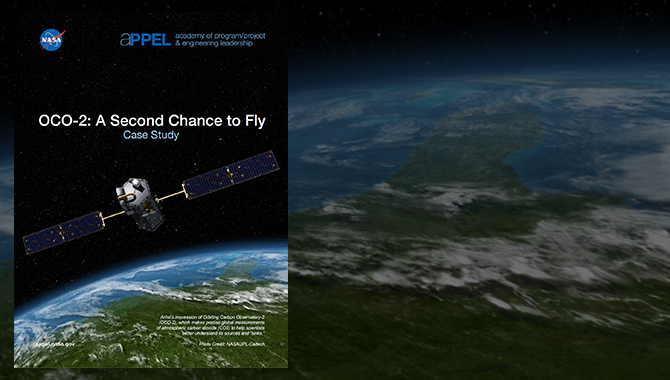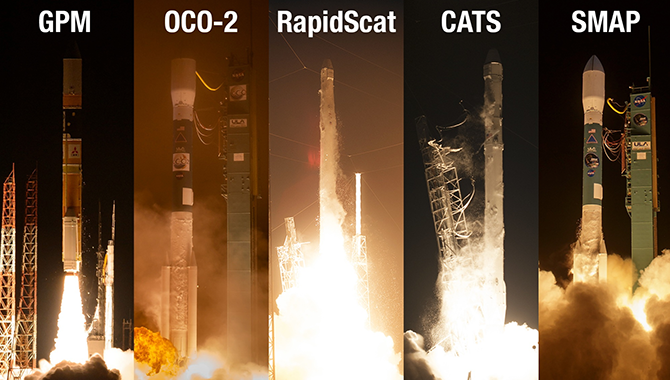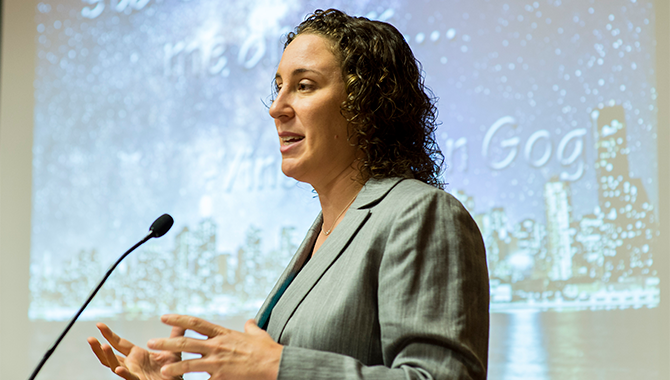
Orbiting Carbon Observatory-2 (OCO-2) launched into its targeted orbit on July 2, 2014, giving NASA a second chance to answer critical questions about atmospheric carbon dioxide (CO2).
“This is the next step in an important journey…for all of us that live on this planet today, and for future generations,” OCO-2 Project Manager Ralph Basilio said after the successful launch. “This mission is going to deliver so much information. I can’t wait to work with the scientists and to complete that aspect of the mission. To be able to deliver on the promises that were made to the American public and to the rest of the world.”
OCO-2 is not the first NASA spacecraft designed to provide highly specific data on CO2 behavior. In 2009, Orbiting Carbon Observatory (OCO), a nearly identical spacecraft, launched with the same goal but failed to reach orbit. Its mission was considered so critical that a second endeavor—OCO-2—was initiated and given Authority to Proceed (ATP) in 2010.
Immediately after the original failed launch, the team began compiling lessons learned to inform and support a successful second attempt. Patrick Guske, Mission Operations Systems Engineer for OCO, contacted everyone on the team for input about what had worked on OCO and what had not. Ultimately, he collected 78 distinct lessons learned and then assigned specific lessons to each team member as they rebuilt the observatory. “Instead of documenting lessons learned for potential incorporation into a future endeavor, we [had] this opportunity to actually go ahead and employ those lessons learned,” Basilio explained in a past interview.
One decision the team made was to avoid trying to improve the spacecraft. Instead, they kept the design as close to the original as possible. This allowed the team to skip key decision points (KDP) A and B and several other technical reviews, compressing the timeframe for the formulation phase. As a result, OCO-2 is a virtual clone of OCO.
An important distinction is the launch vehicle for OCO-2. OCO was launched on a Taurus XL. During launch, the payload fairing failed to separate from the rocket, causing OCO to miss its injection orbit. While the team initially intended to use a Taurus XL for OCO-2 as well, they reconsidered after a similar payload fairing failure occurred with a Taurus XL on a different NASA mission. Ultimately, OCO-2 lifted off aboard a Delta II rocket and separated successfully from its launch vehicle.
The OCO-2 mission is an Earth System Science Pathfinder project run by the Jet Propulsion Laboratory (JPL). OCO-2 will employ high-resolution thermal telescopic instruments to provide extremely detailed information about the global distribution of CO2, a greenhouse gas implicated in the changing planet climate. Scientists know that CO2 is absorbed into “sinks,” such as oceans and growing plants, but need to discover more about where it comes from, where else it goes, and why. After completing a series of maneuvers over the next few weeks, OCO-2 will become the lead in the Afternoon Constellation (A-Train) of international polar-orbiting environmental satellites. Its science operations will commence approximately 45 days after launch.
Read previous APPEL stories featuring interviews with OCO Project Manager Ralph Basilio and OCO Mission Operations Systems Engineer Patrick Guske.
Learn more about the OCO-2 mission.
Early on the morning of July 2, 2014, at Vandenberg Air Force Base in California, the United Launch Alliance Delta II rocket prepared to launch OCO-2 into space.
Featured Photo Credit: NASA









